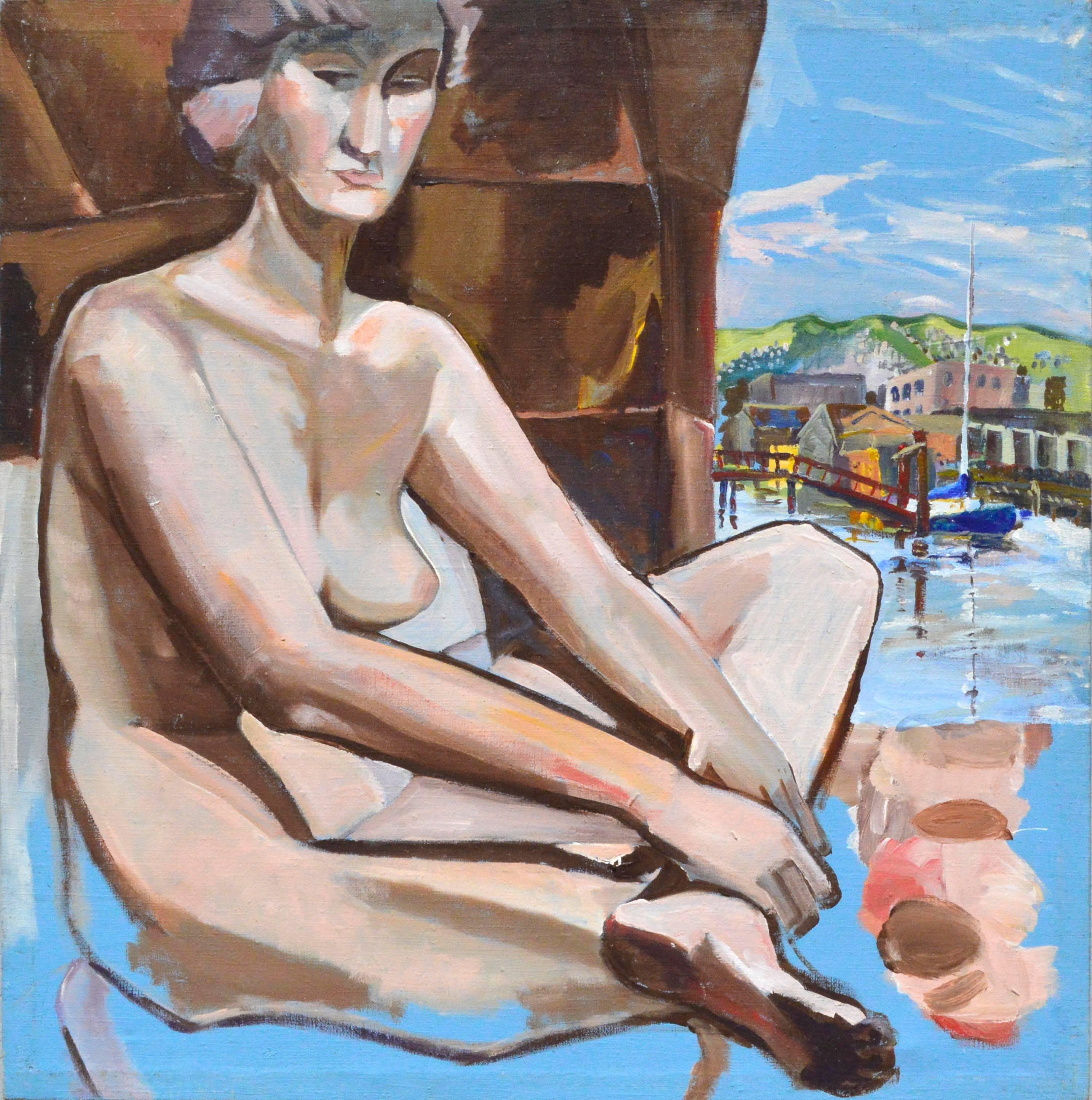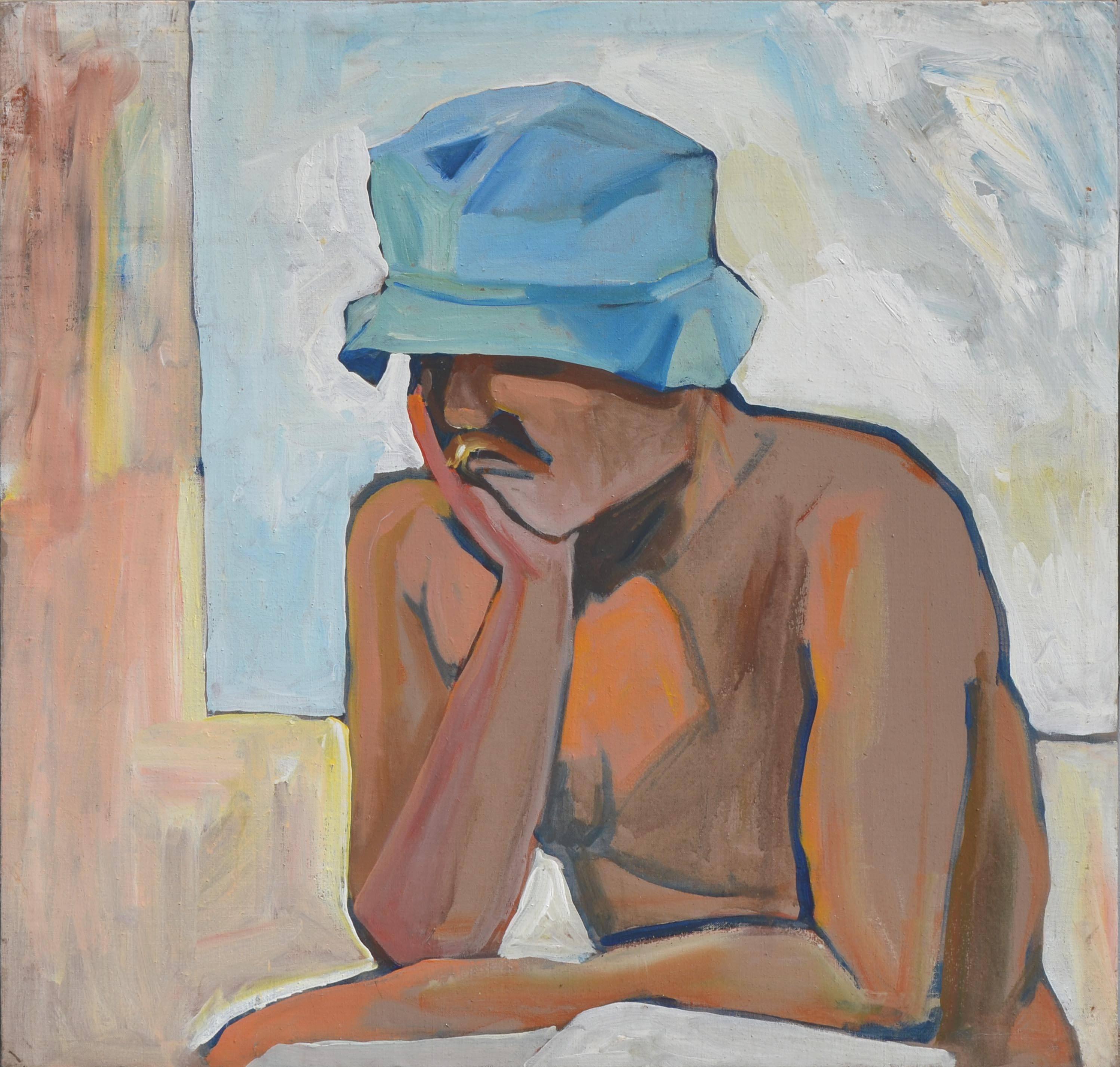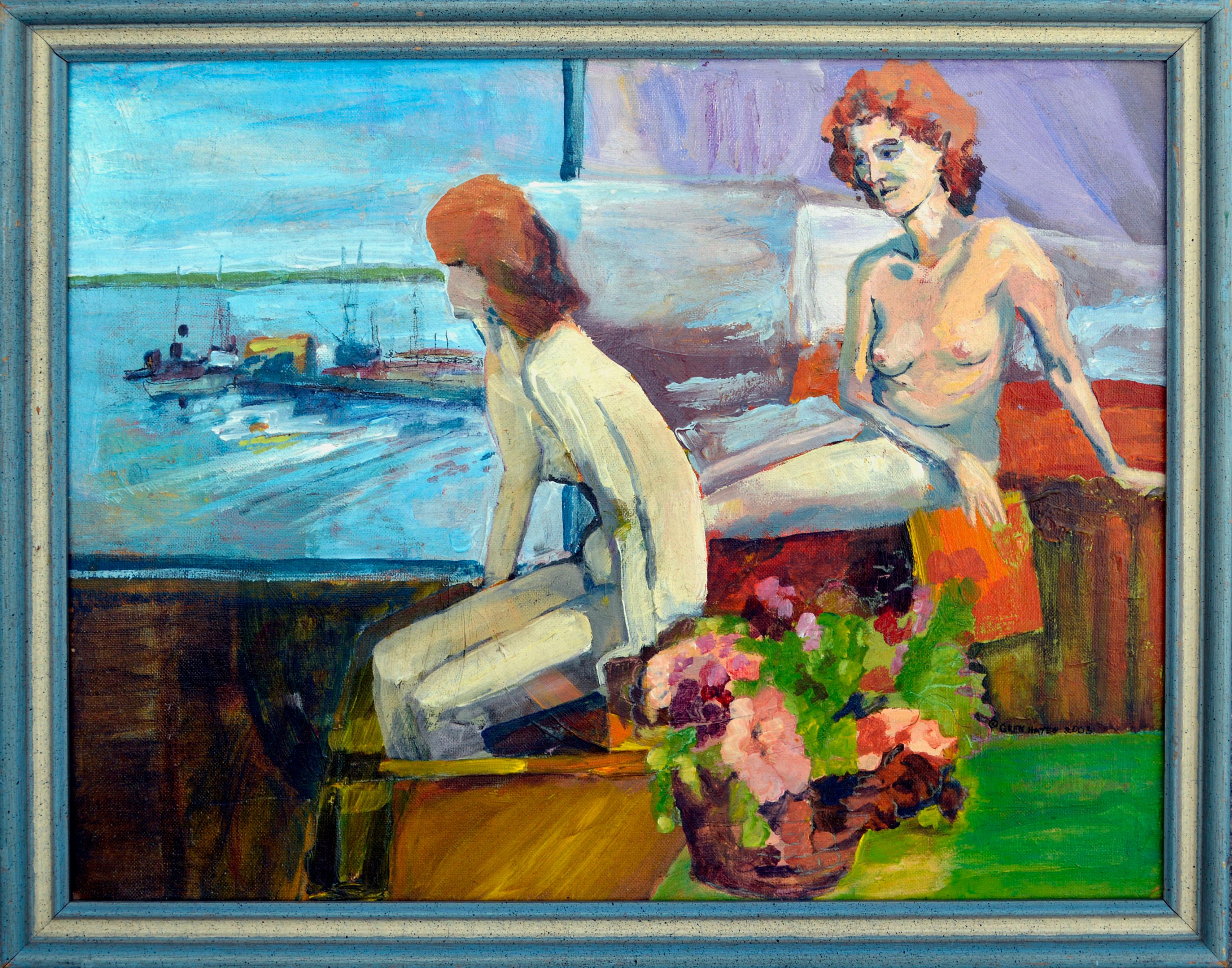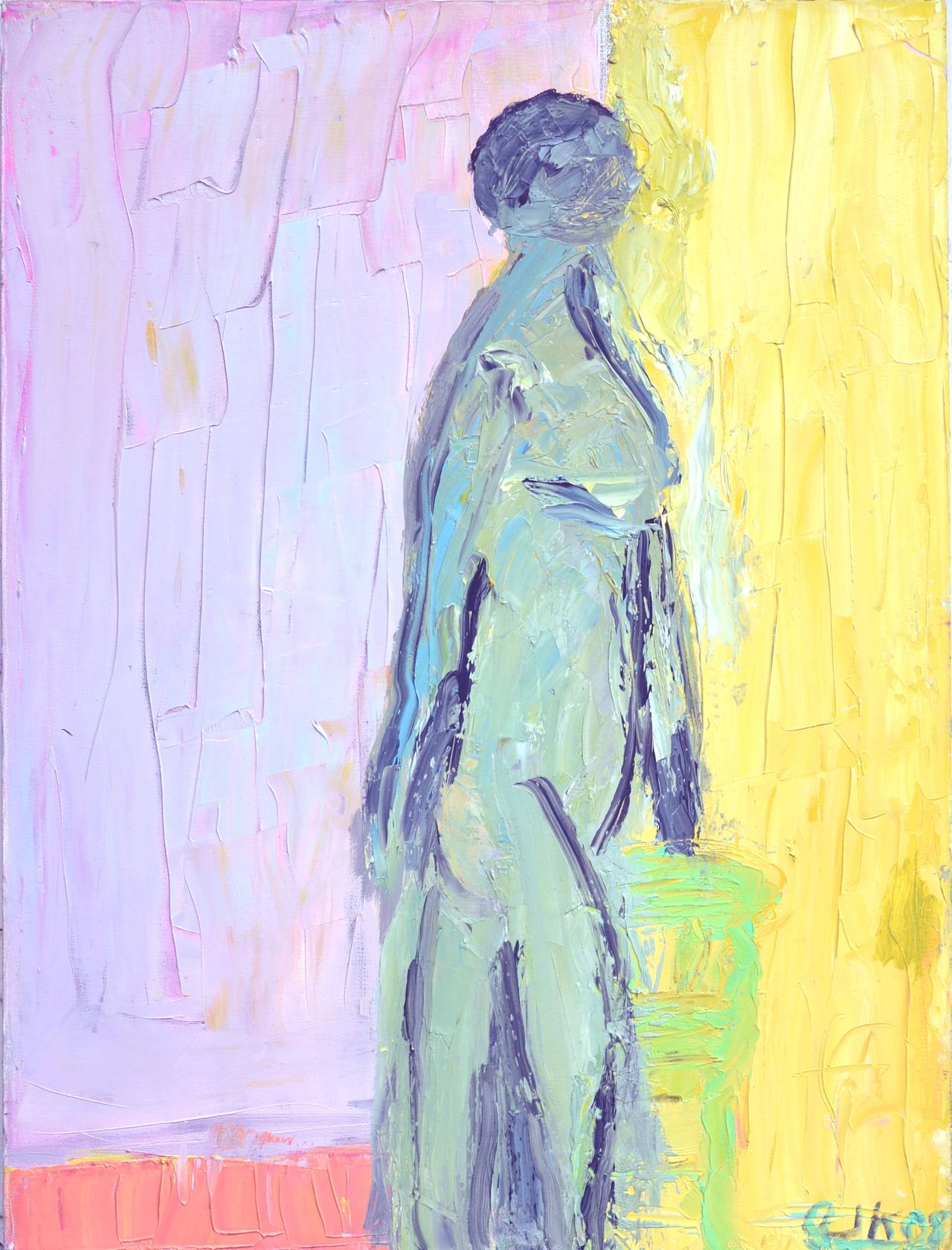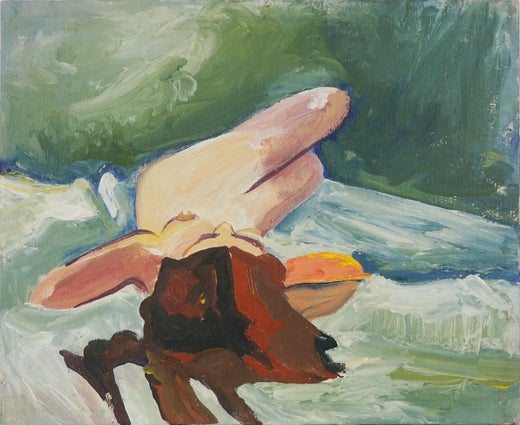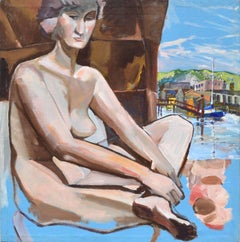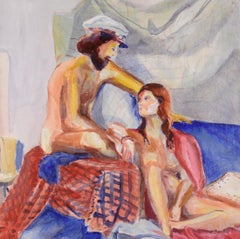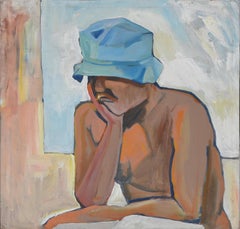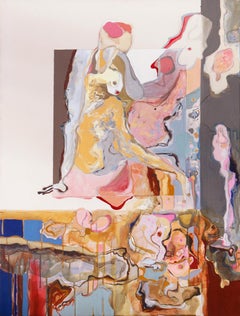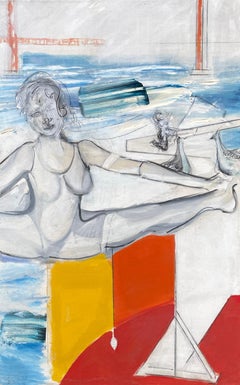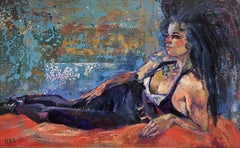Patricia Gren HayesFigurative Study In Sausalito by Patricia Gren Hayes Berkeley Figurative School1960
1960
About the Item
- Creator:Patricia Gren Hayes (1932, American)
- Creation Year:1960
- Dimensions:Height: 29 in (73.66 cm)Width: 29 in (73.66 cm)Depth: 1 in (2.54 cm)
- Medium:
- Movement & Style:
- Period:
- Condition:Very good condition.
- Gallery Location:Soquel, CA
- Reference Number:Seller: N34611stDibs: LU54213697152
Patricia Gren Hayes
Patricia Gren Hayes is a Bay Area Figurative/Feminist Art Movement artist who studied at Winnipeg Public Art School in 1950. She received early recognition in Museum and Gallery competitions and exhibitions and was awarded a Special Education in Art recognition by the Winnipeg Museum of Fine Art as well as a scholarship to the Banff College of Fine Art. Further studies were at the University of Manitoba.
Hayes was a Member of Winnipeg Free Press Sketch Club and was a cartoonist and paste-up for a French-English bi-weekly in Eastern Canada. She studied outdoor Impressionism in New York, 1960; attended the California College of Arts and Crafts, 1962, and BA, U.C. Berkeley, 1976, where she studied under Elmer Bischoff, David Simpson, Joan Brown, Felix Ruvolo, Yolanda Lopez and Vincent Perez. Hayes started a freelance commercial art business in 1963; copyrighted a National Cartoon, 1976, and served as Exhibition Director for San Francisco Woman Artists Gallery and the San Francisco Museum of Modern Art, 1976–78. She was a workshop instructor at the San Francisco Women Artists Gallery, 1977–85, and was Manager/Owner Stanton Art Gallery, Alameda, CA, 1976–82. Hayes exhibited solo at Berkeley Marina, 1974; Oakland Center for The Visual Arts, "Images of Women," 1979.
(Biography provided by Robert Azensky Fine Art)- ShippingRetrieving quote...Shipping from: Soquel, CA
- Return Policy
More From This Seller
View All1970s Abstract Expressionist Figurative Paintings
Canvas, Oil
1970s American Modern Figurative Paintings
Canvas, Oil
1980s Abstract Expressionist Figurative Paintings
Canvas, Oil
Early 2000s American Impressionist Figurative Paintings
Canvas, Acrylic, Board
21st Century and Contemporary Contemporary Figurative Paintings
Canvas, Oil
Mid-20th Century American Modern Figurative Paintings
Canvas, Oil
You May Also Like
1960s Post-Impressionist Portrait Drawings and Watercolors
Paper, Watercolor, Gouache, Graphite, Mica
1980s Modern Nude Paintings
Canvas, Acrylic, Graphite
2010s Post-Modern Figurative Paintings
Oil, Canvas, Stretcher Bars
20th Century Impressionist Figurative Paintings
Oil
1950s Modern Interior Paintings
Canvas, Oil
1970s Modern Nude Paintings
Oil, Canvas, Charcoal
